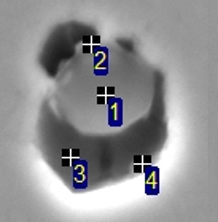NANOSYSTEMS: PHYSICS, CHEMISTRY, MATHEMATICS, 2018, 9 (4), P. 500–506
Promising directions of increasing the properties of steel
A. I. Zaitsev – Bardin Central Research Institute of Ferrous Metallurgy, Radio str., 23/9, build.2, Moscow, 105005, Russia; aizaitsev1@yandex.ru
A.V. Koldaev – Bardin Central Research Institute of Ferrous Metallurgy, Radio str., 23/9, build.2, Moscow, 105005, Russia; koldaevanton@gmail.com
N. A. Arutyunyan – Department of Chemistry, Lomonosov Moscow State University, Leninskie Gory 13, GSP1, Moscow, 119991, Russia; naarutyunyan@gmail.com
The study of regularities of the formation and evolution of nonmetallic inclusions and phase precipitates in modern structural steels has been carried out. It has been shown that the formation of several types of complex nonmetallic inclusions results in a substantial increase in the complex of steel properties and neutralizing the negative influence of impurities while a reduction in costs. An even more significant improvement in the properties of steel can be achieved by controlling the characteristics of carbide, carbonitride, and other types of phase precipitates. Herewith, ferritic steels are the most promising. The previously unreachable complex of indicators of difficult to combine service properties of these steels has been achieved by the formation of a homogeneous fine-dispersed microstructure and a volumetric system of primarily interphase precipitates. Based on established principles, effective technologies for the production of a wide range of various types of steels have been developed.
Keywords: structural steels, nonmetallic inclusions of complex composition, nanoscale phase precipitates, interphase precipitates, structure, service properties, production technology.
PACS 64.30.Ef
DOI 10.17586/2220-8054-2018-9-4-500-506
